The paint roller is made up of a handle and a rotating cylinder. There are different types, depending on the product to be painted: dyes, enamels, varnishes, paint for walls and ceilings, plaster... The roller can be made of synthetic or natural fiber. We recommend how to choose it.
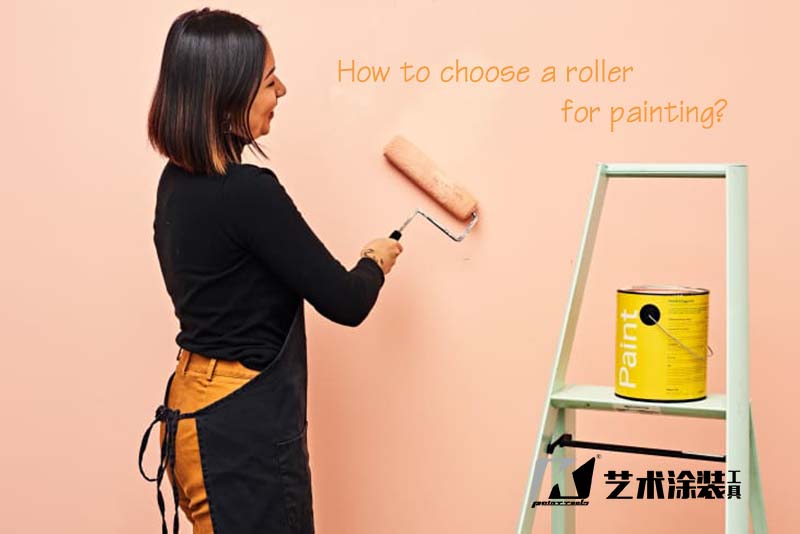
1. fiber type
2. Length of fibers and hairs
3. Type of product to apply
A paint roller is a tool for painting large smooth surfaces. It is made up of a handle (the handle) and a cylinder (the roller itself). This last element can be replaced independently of the handle.
The type of support or surface on which you want to apply the paint (smooth, irregular);
the type of product applied (paint, lasur, varnish, plaster);
the desired result.
The paint roller can be used alone, but is often part of a painting kit. It is generally accompanied by at least one brush that will allow you to reach the corners.
The cylinders of the paint rollers adapt to the surface on which they apply the product. Depending on the result you are looking for, they can be made of different materials or have specific characteristics.
The foam roller is useful for multipurpose uses. It leaves a very smooth finish and is not very resistant to various uses. You can use it, for example, to apply a primer on which to spread a decorative paint or simply to paint a tile with a specific paint.
As its name indicates, this roller is specifically for use with products to treat wood that allows it to breathe, staining it and protecting it from UVA rays.
This replacement roller is specially designed for surfaces where you want to varnish or lacquer and achieve a very smooth finish. The application of lacquers provides a brilliant finish.
The replacement of a roller for facades has long fibers in order to better cover the irregularities present in the surface that is painted (usually with plaster). You can use it by helping yourself with a telescopic handle or on a scaffolding.
Long-haired roller adapts to uneven and textured walls. It can be used to paint a brick wall, gotelé or even to apply on the lining of a wall or facade. Attention, because these rollers tend to leak...
This type of cylinder is recommended for smooth walls, with it a uniform effect is achieved. Its composition and the length of the strands make it known as "anti-drip" because it hardly drips.
The spike or beehive-type cylinder makes it possible to provide the plaster with a particular structure. This roller has holes all over its surface, and when it is rolled along the surface, it generates irregularities and small points, as if imitating the gotelé.
There are rollers with rough surfaces and various materials, such as leather or polypropylene, arranged in various ways with which decorative finishes can be achieved, creating relief effects.
The cylinder of the roller can be made up of synthetic fibers, natural fibers, or a mixture of both.
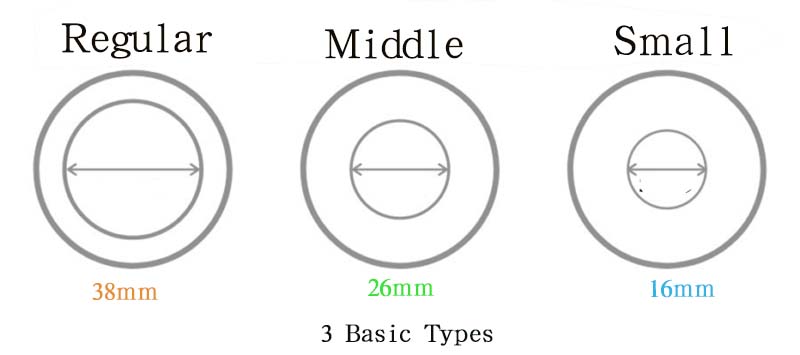
Regular Roller: rarely used
Middle Roller: Roller over 7 inches
Small Roller: Easy to handle and many types
Now 6 inches is popular and there are many types.
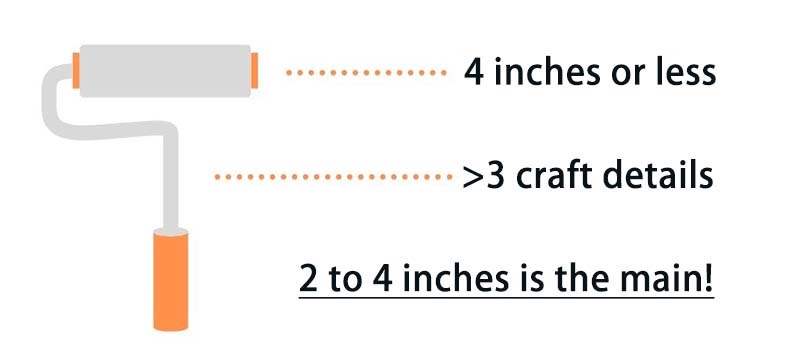
It is commonly known as "Mini-Collo". It's a relatively new type, but it's popular, so the number of types is increasing.
I will explain each in detail.
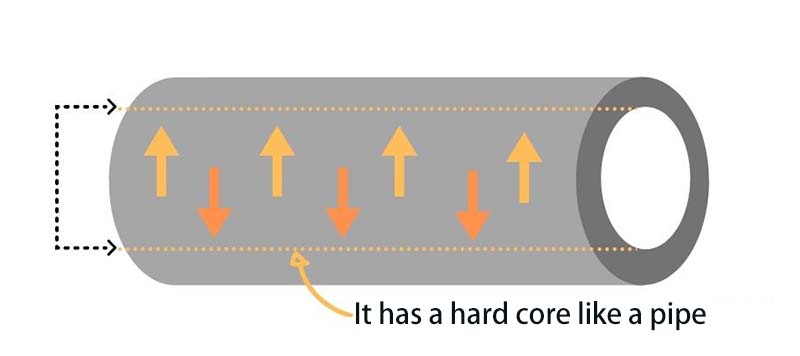
heavy
have a sense of stability
For 7/9 inches
The regular roller has a solid support and is structured so that the force is transmitted evenly. It is often said that because of its large size, it is suitable for painting large areas, but that is not true. Correctly, it is a roller for painting wide and flat walls with few joints. It is also suitable for using sand bone rollers (rollers for applying patterns) because the subtle amount of force is easily transmitted to the roller.
suitable work
Painting of gypsum board (interior)
When painting the roof with tile sticks, etc.
Exterior wall mastic
There are many cases where considerable technique is required, such as when a professional-grade finish is required. Opportunities to use it in general housing are decreasing. It is also difficult to clean the roller handle after use. If you skip it, it will harden and become garbage.
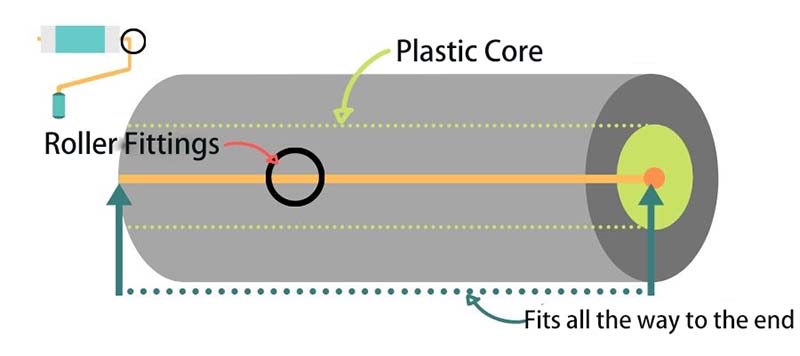
for almost 7 inches
Decent stability
Least frequently used
It's easier to use than regular, but half-finished performance. When asked where to use it, I hesitate. The metal fittings of the handle can be inserted all the way to the end, so there is a sense of stability, but 7 inches is rarely used in the first place. 6 inches is small, but there aren't many cases where you don't even need to use a regular roller. The simple design of the handle makes it easy to wash. It's a very spot-like way of using that 6 inches is not enough.
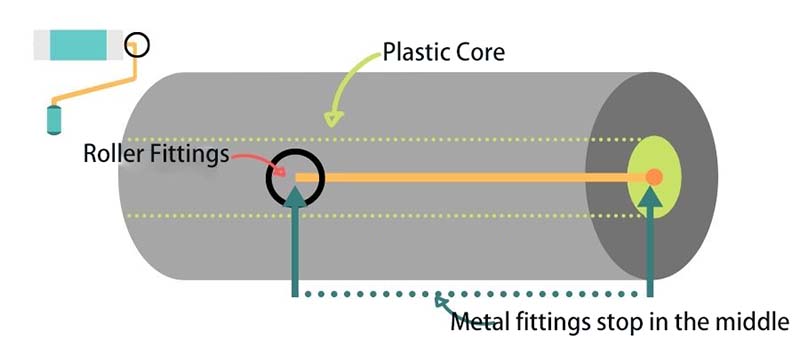
rich in variety
user friendly
For 4/6 inch
The frequency of use is high and the lineup is complete. Speaking of rollers, this is it. It is OK if you use this small roller. Most of the ones from the manufacturer are for 6 inches.
I usually use 6 inches. The number of 4-inch rolls has decreased with the advent of mini rollers. Repainting the exterior walls is enough. Hmm, the worst part is that the stability is inferior to regular rollers.
suitable work
Wall painting (external/internal)
Roof painting (almost general)
General painting (DIY in general)
Regular rollers are fine for special painting and situations, and small rollers are fine for other situations.
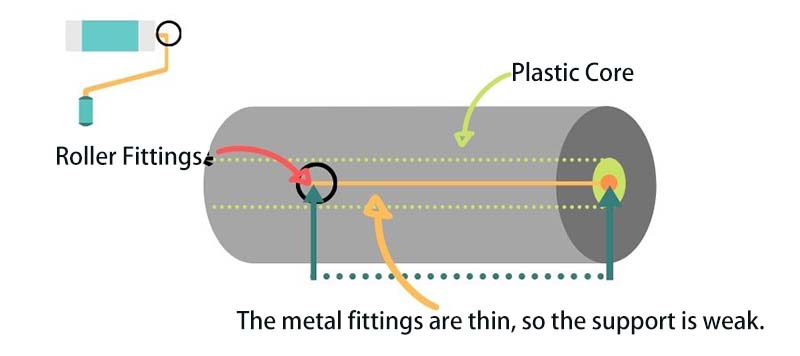
For painting in narrow spaces
insanely light
Suitable for 1-4 inch
*When using 1 to 3 inches, please select the size of the handle as well. The turn of the brush has decreased.
Demand is high, and more and more products are coming out from manufacturers. Versatile and excellent for comfortable painting even in complicated places, especially places where small rollers cannot enter (gap of 3 cm or less, etc.) Narrow places and gaps that could not be painted without a brush have become easier!
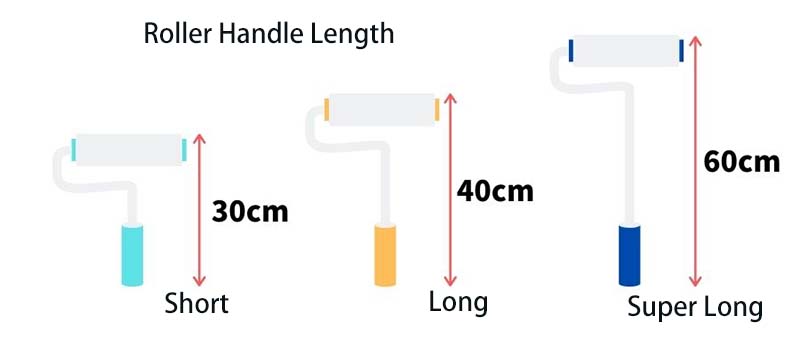
Basically what you choose depending on how much range you want to paint. It's like an extension of your hand, so it gets harder to handle as it gets longer. Basically it is OK if you choose short.
Short handles are often used for exterior walls, etc.
Shorts are easy to use for uneven designs like exterior walls.
Features of the short handle
Easy to handle
easy to apply force
Narrow area to apply at once
The feature of the short handle is that the power is easily transmitted to the roller as much as it is short. It is easy to use for painting uneven surfaces such as outer walls. Because it is easy to handle, it is overwhelmingly short that is used frequently.
Long and super long are suitable for roofs and ceilings
The reason I use long handles like long is because I want to reduce the number of joints. The smooth design of the ceiling and roof (tile bars, etc.) is very conspicuous when there is a seam.
Do not create layers of paint
apply an even amount
Bringing Roller Patterns Together
To satisfy the above, it is necessary to apply one coat from end to end. If it is about 2m, it is possible to apply it in one time using a long or super long handle. By the way, if you have a super technique, you can join the patterns together even if you connect them in the middle. It's just that I'm so nervous and tired. In other words, it is easier to paint through as much as possible.
It is very difficult to master the joint handle attached to the roller. Not for use by amateurs. I think it would be nice if you could imagine cutting vegetables with a "kitchen knife" attached to the tip of the joint. It's not working as I thought it would.
high wall
ceiling
roof and floor
It is sometimes used to paint high places that are out of reach, but it is also used to paint roofs and floors that are more than 3m long.
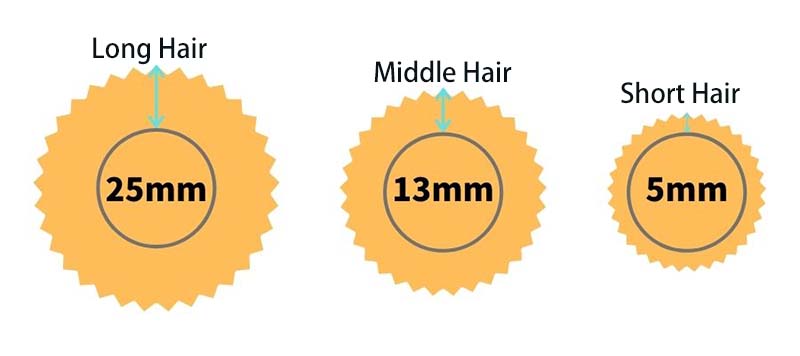
Long hair: Corresponds to irregularities
Middle hair: good balance
Short hair: Emphasis on finish
We recommend the 17-20mm type, which has a good balance between finish and ease of use.

Beautiful finished skin
Flat plane orientation
Small amount applied at one time
Short hair has a beautiful finished skin, so it is suitable for flat surfaces such as metal. However, it is difficult to paint a wide area because the paint does not hold well.
suitable for
metal plate
plastic
color box etc.
It's a bit difficult to apply, so it might be a good idea to use it only when you want a particularly clean finish.

The middle hair is a versatile type that can be used in many places. If the hair length is short, the finish will be beautiful, but the middle hair does not change much. Here, the type of roller makes a difference, so you need to choose a roller with a beautiful finish.
suitable for
outer wall
Interior/Wall
Interior/Ceiling
Basically anything is OK, so I think you should use medium hair for the time being. Let's choose 13-17mm if you get lost!

Rough finish
Can handle unevenness
A wide area can be applied at once
The hair length is long, so it blends well with unevenness. In addition, it is also used when working speed is important because it contains paint well.
suitable for
colonial roof
General siding
Uneven design wall
It is often used for outer walls with many unevenness and colonial roofs. The finished surface is rough, so it is not suitable for flat surfaces. It doesn't appear much in interior work. 25mm or more is less frequently used.
Synthetic fibers are particularly suitable for the application of acrylic or synthetic paint. Today they are the most developed and adapted to the performance and results of most paints.
Mixed fibers are suitable for oil or solvent based paints.
Copyright:@2020-2021
Comments Please sign in or sign up to post.
0
0 of 500 characters used